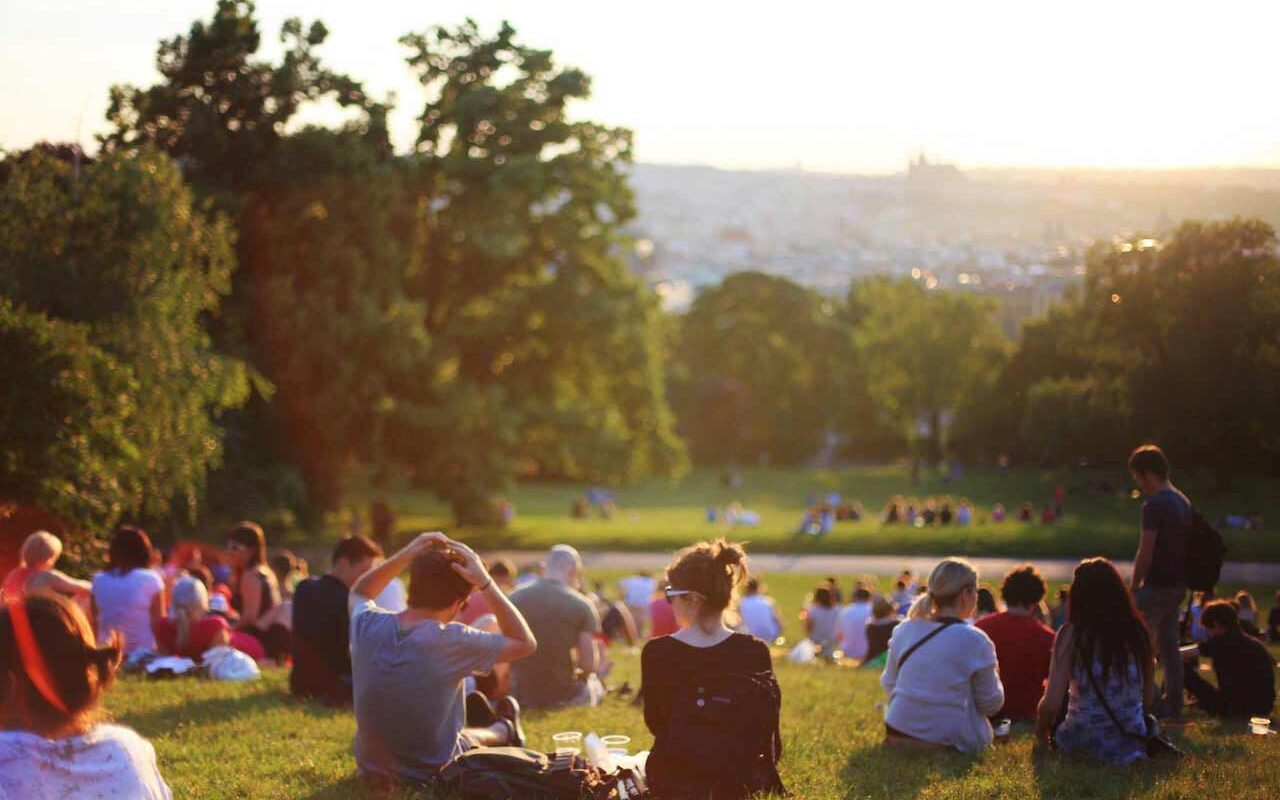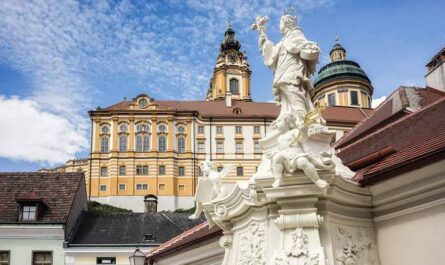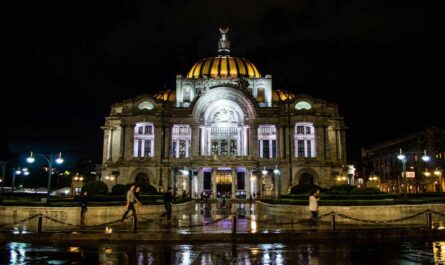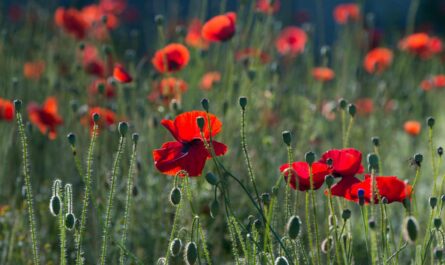What are some of the interesting facts about Belgium? Nestled in the heart of Western Europe, Belgium captivates with its rich history, diverse culture, and culinary delights. Bordered by France, Germany, Luxembourg, and the Netherlands, this small yet dynamic country is renowned for its medieval towns, stunning architecture, and vibrant cities. Brussels, the bustling capital, serves as the administrative center of the European Union, showcasing a blend of grandeur with its ornate buildings and modern infrastructure. Beyond the cosmopolitan charm of Brussels, Belgium unfolds a tapestry of picturesque landscapes, from the rolling hills of the Ardennes to the sandy beaches along the North Sea coast. The country’s cultural mosaic is equally captivating, with three official languages—Dutch, French, and German—reflecting its diverse heritage. In this article, I will talk about some interesting facts about Belgium.
Interesting Facts About Belgium: History, Culture, Travel
Visitors are drawn to Belgium’s UNESCO World Heritage sites, including the historic center of Bruges with its medieval architecture and Ghent’s picturesque canals. With its welcoming atmosphere and penchant for the good life, Belgium invites travelers to indulge in its world-famous chocolates, exquisite beers, and sumptuous cuisine, making it a treasure trove for exploration and discovery. Here are some interesting facts about Belgium:
1. Castle Country: A Kingdom of Magnificent Fortresses
Belgium reigns supreme as a kingdom of castles, boasting the highest concentration of these majestic fortresses per square kilometer in the world. For history buffs and fairytale enthusiasts alike, Belgium offers a treasure trove of architectural wonders, each steeped in centuries of lore and legend. From the imposing ramparts of medieval strongholds to the romantic turrets of Renaissance châteaux, Belgium’s castles stand as silent sentinels of the nation’s rich heritage and turbulent past.
Visitors can embark on a captivating journey through time as they explore the grand halls, secret passageways, and lush gardens of these iconic landmarks, marveling at their architectural splendor and imagining the stories of kings, queens, and knights that once echoed within their walls. With over 3,000 castles scattered across the Belgian countryside, there’s no shortage of enchanting sights to behold in this castle country.
2. Chocolate Paradise: Indulgence in Every Bite
Belgium is synonymous with indulgence, and nowhere is this more evident than in its world-renowned chocolate industry. With over 2,200 tons of chocolate produced annually and an estimated 2,000 chocolate shops dotted across the country, Belgium has earned its reputation as a chocolate paradise. From silky-smooth pralines to rich truffles and artisanal bars, Belgian chocolate delights the senses with its unparalleled quality and craftsmanship.
Visitors can embark on a delectable journey through chocolate’s rich history and production process at museums, workshops, and tasting tours, immersing themselves in the sweet symphony of cocoa beans, sugar, and butter. Whether savoring a velvety ganache in a cozy café or indulging in a box of handcrafted bonbons, chocolate lovers are sure to find bliss in every bite in Belgium.
3. Beer for Every Palate: A Toast to Tradition and Diversity
In Belgium, beer is more than just a beverage—it’s a way of life. With over 800 varieties of beers brewed across the country, each often served in its own unique glass, Belgium stands as a mecca for beer enthusiasts seeking to explore the boundless depths of flavor and tradition. From crisp lagers and fruity lambics to complex ales and robust Trappist brews, Belgian beer offers something for every palate and preference.
Visitors can raise a glass to Belgian brewing heritage at lively cafés, historic breweries, and bustling beer festivals, where they can sample an array of brews and soak up the convivial atmosphere of beer culture in Belgium. With its deep-rooted traditions, innovative craftsmanship, and unparalleled diversity of flavors, Belgium’s beer scene continues to captivate and inspire aficionados from around the globe. Cheers to Belgian beer!
4. Waffles: A National Treasure
Belgium’s culinary prowess extends beyond chocolate and beer to include the beloved waffle, a national treasure enjoyed in both sweet and savory varieties. Whether dusted with powdered sugar and drizzled with syrup or adorned with savory toppings like cheese and bacon, Belgian waffles are a ubiquitous street food and a cherished breakfast treat. With their crispy exterior and soft, fluffy interior, these delectable delights tantalize the taste buds and warm the soul, making them a must-try for visitors exploring the culinary delights of Belgium. Whether enjoyed fresh from a food cart on a bustling street corner or savored in a cozy café alongside a steaming cup of coffee, Belgian waffles offer a taste of tradition and comfort that embodies the heart and soul of Belgian cuisine.
5. Comic Strip Powerhouse: Birthplace of Iconic Characters
Belgium holds the distinction of being the birthplace of the modern comic strip, with iconic characters like Tintin, the Smurfs, and Lucky Luke captivating readers worldwide. From the whimsical adventures of Tintin to the fantastical world of the Smurfs, Belgian comic artists have left an indelible mark on popular culture, inspiring generations of readers with their imaginative storytelling and vibrant artwork. Visitors to Belgium can immerse themselves in the world of comic strips at museums, galleries, and street art installations dedicated to celebrating the country’s rich comic heritage. With its colorful characters, engaging narratives, and enduring appeal, Belgian comics continue to enchant and delight audiences of all ages, cementing Belgium’s reputation as a powerhouse in the world of sequential art.
6. A Diamond District: Where Brilliance Meets Tradition
Antwerp, Belgium’s second-largest city, shines as the world’s leading diamond center, boasting a storied history of craftsmanship and trade that dates back centuries. Home to the renowned Antwerp Diamond District, the city is a bustling hub where over 80% of the world’s rough diamonds are polished, graded, and traded.
Visitors to Antwerp can explore the glittering storefronts and bustling diamond exchanges that line the streets of the district, witnessing firsthand the intricate artistry and meticulous craftsmanship that go into transforming rough stones into dazzling gems. Whether admiring stunning jewelry collections at boutique shops or learning about the diamond industry’s history and significance at museums and workshops, visitors to Antwerp are invited to discover the brilliance and beauty of diamonds in the heart of Belgium’s diamond capital.
7. French Fries: A Belgian Invention
Contrary to popular belief, the beloved snack of French fries actually traces its roots back to Belgium. Belgians take great pride in their creation, known locally as “frites,” which are typically thicker and double-fried to achieve a crispy exterior and fluffy interior. Traditionally served with a dollop of creamy mayonnaise, Belgian fries are a ubiquitous street food and a beloved culinary staple. Whether enjoyed as a quick snack from a bustling friterie or savored as a side dish alongside a hearty meal, Belgian fries offer a tantalizing taste of tradition and culinary craftsmanship that delights locals and visitors alike.
8. Three Official Languages: Reflecting Cultural Diversity
Belgium’s cultural landscape is as diverse as it is fascinating, reflected in the country’s three official languages: Dutch (Flemish), French, and German. This linguistic diversity is a testament to Belgium’s rich history and unique blend of cultures, with Dutch spoken predominantly in the northern region of Flanders, French in the southern region of Wallonia, and German in a small area along the eastern border.
Visitors to Belgium can immerse themselves in the country’s linguistic tapestry, hearing the melodic cadence of Flemish in the streets of Antwerp, conversing in elegant French at sidewalk cafés in Brussels, and exploring the charming German-speaking communities nestled amidst the picturesque Ardennes. With its multilingual population and vibrant cultural scene, Belgium celebrates its linguistic diversity as a source of strength and unity.
9. The Manneken Pis: Quirky Charm in Brussels
One of Belgium’s most quirky and beloved landmarks is the Manneken Pis, a small bronze fountain statue depicting a urinating boy located in central Brussels. Despite its diminutive size, this iconic statue has captured the hearts and imaginations of visitors from around the world, becoming a symbol of Brussels’ irreverent spirit and sense of humor. Dressed in various costumes and outfits on special occasions and holidays, the Manneken Pis adds a touch of whimsy and charm to the bustling streets of Brussels, drawing crowds of tourists eager to catch a glimpse of this famous figure. Whether admiring the statue’s playful demeanor or joining in the festivities surrounding its colorful wardrobe changes, visitors to Brussels are sure to be charmed by the quirky allure of the Manneken Pis.
10. The Surrealist Spirit: A Legacy of Artistic Innovation
Belgium has left an indelible mark on the art world, particularly in the realm of surrealism, with renowned painters like René Magritte leading the charge. Magritte’s thought-provoking works, characterized by dreamlike imagery, juxtapositions of ordinary objects, and playful subversion of reality, continue to captivate audiences worldwide. His iconic paintings, such as “The Treachery of Images” (Ceci n’est pas une pipe) and “The Son of Man,” challenge conventional notions of perception and meaning, inviting viewers to explore the depths of the subconscious and the mysteries of existence. Beyond Magritte, Belgium’s artistic legacy extends to other luminaries of surrealism, including Paul Delvaux and James Ensor, who have each contributed to the country’s rich tapestry of artistic innovation and creativity.
11. A Country Divided (Geographically): Unity in Diversity
Belgium’s geographic landscape is as diverse as its linguistic and cultural tapestry, divided into three distinct regions: Flanders, Wallonia, and Brussels. Flanders, in the north, is predominantly Dutch-speaking (Flemish), while Wallonia, in the south, is primarily French-speaking. Brussels, the capital city, is officially bilingual, serving as a cultural and political crossroads where both French and Dutch coexist. Despite these regional differences, Belgium maintains a spirit of unity and cooperation, with each region contributing its unique cultural heritage and identity to the country’s collective identity. Through dialogue, compromise, and mutual respect, Belgium celebrates its diversity as a source of strength and resilience, forging bonds of solidarity that transcend linguistic and cultural divides.
12. The European Union Capital: A Beacon of International Diplomacy
As the de facto capital of the European Union (EU), Brussels holds a central position in the global arena of international diplomacy and governance. Home to the headquarters of many key EU institutions, including the European Commission, the Council of the European Union, and the European Parliament, Brussels serves as a symbolic and logistical hub for the Union’s decision-making processes and policy implementation.
The city’s cosmopolitan atmosphere, diverse population, and strategic location make it an ideal setting for fostering dialogue, collaboration, and consensus-building among member states. Through its role as the EU capital, Brussels plays a vital role in shaping the future of European integration and promoting peace, prosperity, and cooperation on the world stage.
13. A Peacekeeping Legacy: Commitment to Global Stability
Belgium has earned a reputation as a stalwart advocate for global peace and security, with a longstanding commitment to participating in peacekeeping missions around the world. From conflict zones in Africa to troubled regions in the Middle East, Belgian troops have played a crucial role in international efforts to maintain stability, protect civilians, and facilitate humanitarian assistance.
With a dedication to upholding the principles of peace, cooperation, and human rights, Belgium continues to contribute its expertise, resources, and personnel to peacekeeping operations sanctioned by the United Nations and other international organizations. Through its proactive engagement in peacekeeping initiatives, Belgium strives to make a meaningful difference in promoting peace, resolving conflicts, and fostering a safer, more secure world for all.
14. World’s First Public Transport Network: Pioneering Urban Mobility
Belgium holds the distinction of pioneering the world’s first public transport network using horse-drawn carriages, a groundbreaking innovation that revolutionized urban mobility in the 18th century. With the establishment of this innovative transportation system, Belgians gained unprecedented access to efficient and affordable travel within and between cities, facilitating economic growth, social interaction, and cultural exchange.
The introduction of horse-drawn carriages laid the foundation for modern public transportation systems, inspiring similar initiatives in cities around the world and shaping the way people move and connect in urban environments. Today, Belgium’s pioneering spirit lives on in its modern public transportation networks, which continue to evolve and adapt to meet the changing needs of society while honoring the legacy of innovation that began centuries ago.
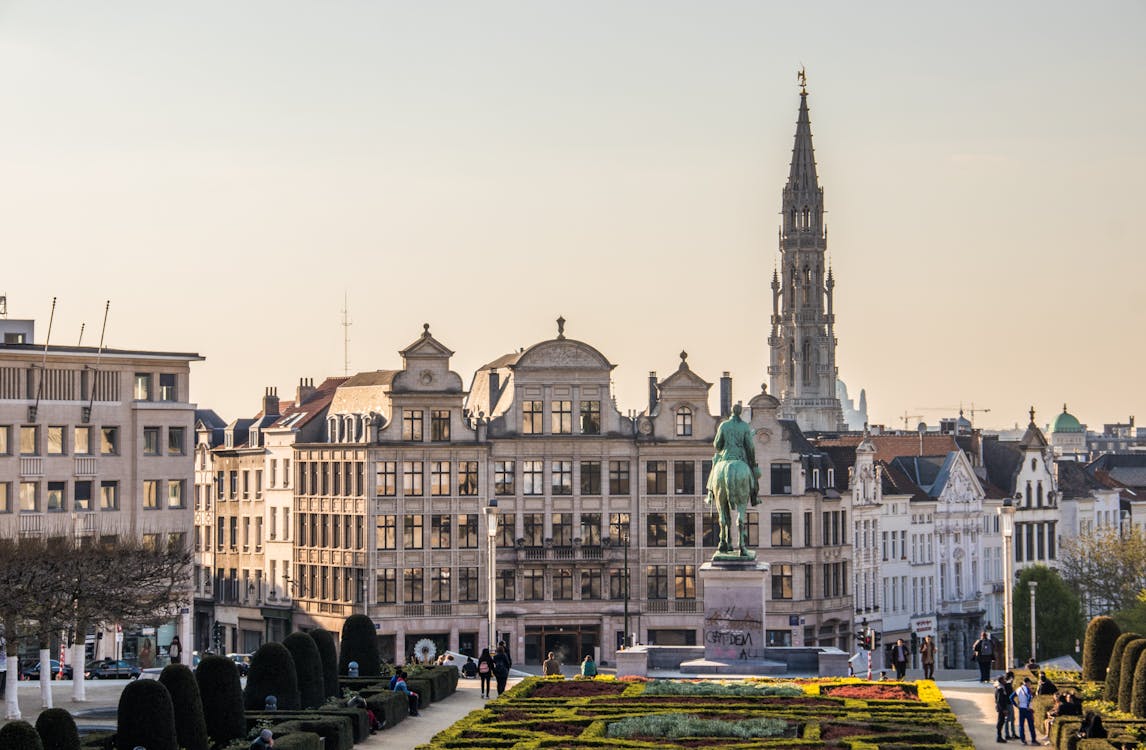
15. The Longest Tram Line: A Coastal Marvel
Belgium’s picturesque coastline is home to a marvel of modern engineering: the Belgian Coast Tram, boasting the title of the world’s longest tram line. Stretching for an impressive 68 kilometers along the scenic coast, this iconic tramway offers passengers a leisurely journey through charming seaside towns, sandy beaches, and rolling dunes, providing unparalleled views of the North Sea and the Belgian coast.
As one of the country’s most popular tourist attractions, the Belgian Coast Tram offers travelers a convenient and environmentally friendly way to explore the coastal region, hop between beach resorts, and enjoy the natural beauty of Belgium’s coastline. With its efficient service, breathtaking vistas, and rich cultural heritage, the Belgian Coast Tram embodies the spirit of innovation and ingenuity that defines Belgium’s transportation legacy.
16. Football (Soccer) Fanatics: A Nation United by the Beautiful Game
Football, or soccer, holds a special place in the hearts of Belgians, serving as a unifying force that transcends cultural, linguistic, and regional divides. The sport enjoys widespread popularity across the country, with fervent fans cheering on their favorite teams in stadiums, pubs, and living rooms alike. In recent years, Belgium’s national football team, known as the Red Devils, has achieved remarkable success on the international stage, earning accolades and admiration for their skill, teamwork, and determination.
From thrilling victories to heart-wrenching defeats, the national team’s journey has captured the imagination of the nation, inspiring pride, passion, and camaraderie among supporters of all ages. Whether clad in red, black, and yellow or waving flags emblazoned with the iconic Belgian lion, football fanatics across Belgium unite in their unwavering love for the beautiful game, celebrating victories and weathering challenges together as one.
17. The European Quarter: Brussels’ Beacon of International Cooperation
Nestled within the heart of Brussels lies the European Quarter, a bustling district that serves as the symbolic and administrative center of the European Union (EU). Here, amidst a landscape of sleek skyscrapers and historic landmarks, one finds the headquarters of key EU institutions, including the European Commission, the Council of the European Union, and the European Parliament.
As the epicenter of European governance and diplomacy, the European Quarter buzzes with activity, as diplomats, policymakers, and bureaucrats from member states converge to discuss pressing issues, negotiate agreements, and shape the future of the continent. Visitors to Brussels can explore this dynamic district, marveling at the architectural marvels that house the institutions shaping Europe’s collective destiny and gaining insight into the workings of one of the world’s largest and most influential political unions.
18. Chocolate Museums: Indulging in the Sweet Delights of Belgian Chocolate
For chocoholics and connoisseurs of culinary delights, Belgium is synonymous with chocolate excellence, boasting a rich heritage of artisanal craftsmanship and mouthwatering creations. Throughout the country, chocolate museums offer visitors a tantalizing journey through the history, artistry, and sensory pleasures of Belgian chocolate-making. From interactive exhibits that reveal the secrets of cocoa cultivation and chocolate production to hands-on workshops where participants can try their hand at crafting delectable treats, these museums immerse visitors in the fascinating world of chocolate.
With tastings, demonstrations, and displays showcasing a dazzling array of truffles, pralines, and bonbons, chocolate museums in Belgium celebrate the country’s status as a global leader in chocolate innovation and quality. Whether indulging in a guided tour or sampling artisanal delights in the gift shop, visitors to these museums are sure to experience the sweetest side of Belgian culture and craftsmanship.
19. Second-Tallest Men: Standing Tall in Belgium
Belgian men stand tall, quite literally, as they hold the distinction of being the second-tallest in the world, trailing only behind their neighbors in the Netherlands. With an average height that surpasses most nations, Belgian men tower over the global population, their stature serving as a physical manifestation of the country’s unique characteristics. Whether strolling through bustling city streets or cheering on their favorite sports teams, Belgians exude a sense of confidence and presence that comes with their impressive height. This distinctive trait reflects not only genetic predispositions but also cultural norms and lifestyle factors that contribute to the overall well-being and stature of the Belgian population.
20. Musical Masters: Harmonizing the Belgian Sound
Belgium’s musical landscape is as diverse and dynamic as its cultural tapestry, boasting a rich heritage that spans classical compositions to contemporary electronic beats. Throughout history, Belgian composers and musicians have made significant contributions to the world of music, leaving an indelible mark on the global stage. One such luminary is Adolphe Sax, the inventor of the saxophone, whose revolutionary creation has shaped the sound of countless musical genres.
In addition to classical compositions, Belgium is also home to a thriving electronic music scene, with pioneering artists like Stromae and Lost Frequencies captivating audiences with their innovative sounds and infectious rhythms. From symphonies and jazz to techno and trance, Belgium’s musical masters continue to enchant listeners and push the boundaries of artistic expression, ensuring that the country’s sonic legacy remains as vibrant and resonant as ever.
21. The European Parliament: Shared Headquarters of European Governance
While Brussels serves as the de facto capital of the European Union, hosting the majority of its key institutions, the city of Strasbourg in France shares the distinction of housing one of its most prominent bodies: the European Parliament. As a symbol of European unity and cooperation, the European Parliament convenes in both Brussels and Strasbourg, with sessions held in each city throughout the year.
This unique arrangement reflects the EU’s commitment to preserving the cultural and historical significance of Strasbourg while ensuring the efficient functioning of its legislative processes in Brussels. Together, these two cities serve as beacons of European governance, embodying the principles of democracy, diplomacy, and solidarity upon which the European project is built.
22. Land of Festivals: Celebrating Belgian Culture
Belgium is a land of festivities, where the spirit of celebration permeates the air throughout the year. From lively carnivals to electrifying music festivals, Belgians embrace every opportunity to come together and revel in their rich cultural heritage. Each region of Belgium boasts its own unique festivals and traditions, offering locals and visitors alike a vibrant tapestry of sights, sounds, and experiences to enjoy.
Whether dancing in colorful parades during the famous Carnival of Binche, immersing oneself in the eclectic lineup of artists at Tomorrowland, or savoring the culinary delights of Belgian Beer Weekend, there’s a festival for every taste and inclination in Belgium. These celebrations serve as a testament to the country’s spirit of joie de vivre and community, uniting people from all walks of life in a shared celebration of Belgian culture and tradition.
23. The Atomium: A Symbol of Modernity and Innovation
Dominating the Brussels skyline, the Atomium stands as an enduring symbol of modernity and innovation, a testament to Belgium’s forward-thinking spirit. Constructed for the 1958 World’s Fair, this iconic structure resembles a giant model of an iron crystal, magnified 165 billion times. Comprised of interconnected spheres linked by escalators and tubes, the Atomium offers visitors panoramic views of the city from its highest spheres, while its lower levels house exhibitions and displays exploring themes of science, technology, and progress. As a beloved landmark and architectural marvel, the Atomium continues to captivate imaginations and inspire awe, attracting visitors from around the world to marvel at its futuristic design and visionary concept.
24. The Saxophone’s Birthplace: Honoring Musical Ingenuity
Belgium holds a special place in the history of music as the birthplace of the saxophone, one of the most iconic and versatile instruments in the modern orchestra. Adolphe Sax, a Belgian instrument maker, revolutionized the world of music with his invention of the saxophone in the early 1840s. Combining elements of woodwind and brass instruments, the saxophone added a unique voice to musical compositions, earning acclaim for its expressive range and dynamic capabilities.
Today, the saxophone remains a beloved instrument in various genres of music, from classical and jazz to rock and pop, serving as a testament to Sax’s ingenuity and innovation. In honoring the legacy of Adolphe Sax, Belgium celebrates its contributions to the world of music and reaffirms its position as a cultural powerhouse on the global stage.
25. The Body Mass Index (BMI): A Belgian Innovation in Health Assessment
The Body Mass Index (BMI), a widely used metric for assessing weight status and health risks, owes its origins to the pioneering work of Lambert Adolphe Jacques Quetelet, a Belgian statistician. In the early 19th century, Quetelet developed the concept of BMI as a simple yet effective tool for measuring an individual’s body mass relative to their height. By dividing a person’s weight in kilograms by the square of their height in meters, Quetelet devised a numerical value that could categorize individuals into different weight classifications, such as underweight, normal weight, overweight, and obesity.
Today, the BMI remains a cornerstone of public health initiatives, guiding healthcare professionals in evaluating weight-related health risks, designing interventions, and promoting healthy lifestyle behaviors. Quetelet’s groundbreaking contribution to the field of biostatistics continues to shape our understanding of body composition and its implications for overall health and well-being.
26. High Fashion Hub: Antwerp’s Creative Hub of Couture
Antwerp, Belgium, has emerged as a dynamic and influential hub in the global fashion industry, renowned for its avant-garde designers, cutting-edge aesthetics, and vibrant fashion culture. From the iconic Antwerp Six, a group of visionary designers who rose to prominence in the 1980s, to a new generation of boundary-pushing talent, Antwerp’s fashion scene continues to captivate and inspire with its innovative designs and fearless creativity.
The city’s prestigious fashion academies, including the Royal Academy of Fine Arts, attract aspiring designers from around the world, fostering a dynamic environment of experimentation, collaboration, and artistic expression. With its eclectic mix of high-end boutiques, concept stores, and fashion-forward events, Antwerp stands at the forefront of global fashion, setting trends, challenging conventions, and shaping the future of style.
27. The Zinneke Parade: A Quirky Celebration of Community and Creativity
Each year, Brussels comes alive with the vibrant energy and colorful spectacle of the Zinneke Parade, a whimsical celebration of Brussels’ multicultural identity and spirit of creativity. Named after the “zinneke,” Brussels’ unofficial mascot—a mixed-breed dog known for its tenacity and adaptability—the parade brings together diverse communities, artists, and performers to showcase their talents and express their unique perspectives through imaginative floats, costumes, and performances.
From giant puppets and stilt walkers to drum circles and dance troupes, the Zinneke Parade transforms the streets of Brussels into a surreal and enchanting playground of art and culture. More than just a procession, the parade is a symbol of unity, inclusivity, and grassroots creativity, inviting participants and spectators alike to join in the joyous celebration of Brussels’ rich cultural tapestry and collective imagination.
28. Waffles: A Delicious Journey Through Belgian Culinary Heritage
Belgium’s love affair with waffles dates back to the Middle Ages, where these delectable treats first made their appearance in the country’s culinary landscape. Over the centuries, Belgian waffles have evolved into distinct regional variations, each boasting its own unique characteristics and flavor profiles. The Liege waffle, characterized by its dense texture and rich, caramelized sugar pearls, remains a beloved indulgence cherished for its sweet simplicity.
In contrast, the Brussels waffle delights with its light and airy texture, adorned with deep pockets perfect for capturing toppings like fresh fruit, whipped cream, or indulgent chocolate sauce. Whether enjoyed as a breakfast staple, a midday snack, or a decadent dessert, Belgian waffles continue to captivate taste buds and evoke a sense of nostalgia for centuries past, serving as a delicious reminder of Belgium’s rich culinary heritage and enduring legacy of craftsmanship.
29. A Multilingual Nation: Embracing Diversity in Language and Culture
Belgium’s linguistic landscape reflects the country’s rich tapestry of cultural diversity and historical influences. While Dutch, French, and German are recognized as the official languages, Belgium’s unique regional identities and proximity to neighboring European nations have fostered a culture of multilingualism among its populace. Many Belgians are fluent in multiple languages, navigating seamlessly between Dutch in Flanders, French in Wallonia, and German in the eastern cantons. RPM 3.0 – 60% CONVERSION & Money for Affiliate Marketing
This linguistic diversity is not only a testament to Belgium’s openness and tolerance but also a practical necessity for effective communication and social cohesion in a nation with distinct linguistic communities. Embracing multilingualism, Belgians celebrate their linguistic heritage as a source of pride and a bridge to understanding and solidarity in an increasingly interconnected world.
30. Looking to the Future: Balancing Tradition and Innovation
As a forward-thinking nation, Belgium embraces progress and innovation while cherishing its rich cultural heritage and traditions. Recognizing the importance of sustainability and environmental stewardship, Belgium has made significant investments in renewable energy sources and green technologies, aiming to reduce its carbon footprint and mitigate the impacts of climate change.
At the same time, Belgium remains committed to preserving its cultural treasures, from medieval town centers and UNESCO World Heritage sites to centuries-old culinary traditions and artistic legacies. By striking a balance between tradition and innovation, Belgium charts a course towards a brighter future, where technological advancements and ecological consciousness harmonize with timeless values of creativity, craftsmanship, and community.
